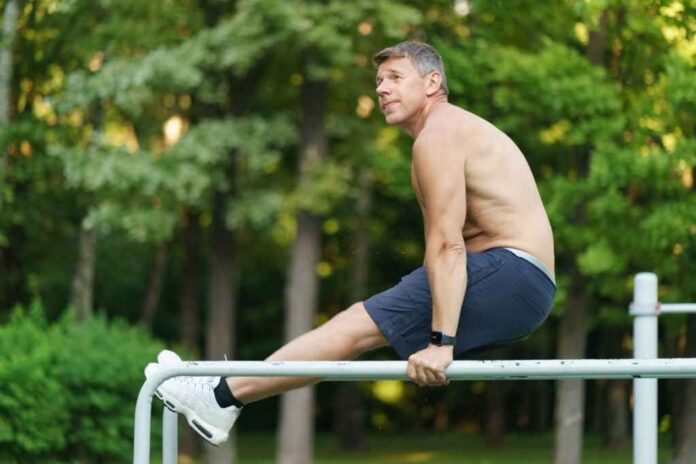Chin-ups on dip bars are an excellent upper-body exercise that targets your back, biceps, and shoulders. They offer a versatile alternative to traditional dip bars and pull-up bars and can be a great addition to your workout routine. In this section, we’ll break down the steps to perform effective chin-ups on dip bars.
- Grip and Setup: Begin by standing in front of the dip bars, facing away from them. Reach back and grab the bars with your palms facing towards you, about shoulder-width apart. Make sure your arms are fully extended, and your feet are off the ground.
- Pull-Up: Initiate the movement by pulling your body up towards the bars. Focus on using your back and biceps to perform the chin-up. Keep your elbows close to your body and engage your core for stability.
- Full Extension: Lower your body back down until your arms are fully extended. This completes one repetition.
Performing chin-ups on dip bars can be challenging but highly rewarding. They help build upper-body strength and improve grip endurance. Start with a few reps and gradually increase the intensity to make the most of this powerful exercise.
Benefits of Chin-Ups on Dip Bars
Incorporating chin-ups on dip bars into your fitness routine comes with a plethora of benefits:
- Upper Body Strength: This exercise primarily targets your back, biceps, and shoulders, helping you develop impressive upper body strength and muscle definition.
- Variation and Versatility: Chin-ups on dip bars provide an alternative to traditional pull-ups, adding variety to your workouts and targeting different muscle groups.
- Improved Grip Strength: The exercise demands a strong grip, which can benefit your performance in other exercises and daily activities.
- Functional Fitness: The strength gained from chin-ups on dip bars translates into improved functional fitness, making everyday tasks easier.
- Core Engagement: To maintain stability during the movement, your core muscles are actively engaged, contributing to core strength and stability.
- Calorie Burn: Chin-ups on dip bars can aid in calorie burning and weight management when incorporated into a well-rounded fitness program.
- Enhanced Posture: Strengthening your back and shoulder muscles can help correct poor posture, reducing the risk of neck and back pain.
- Convenience: Dip bars are often available at gyms and are suitable for home use, making it a convenient exercise option.
Incorporate chin-ups on straight or parallel dip bars into your fitness routine to experience these remarkable benefits and take your upper-body strength and overall fitness to new heights.
Muscles Worked | Chin-Ups
Chin-ups are a fantastic compound exercise that engages multiple muscle groups simultaneously, making them an efficient addition to any fitness routine. Here’s a breakdown of the key muscles worked during chin-ups:
- Latissimus Dorsi (Lats): The primary muscles targeted during chin-ups are the lats, which run down the sides of your back. These muscles are responsible for the pulling motion, helping you lift your body towards the bar.
- Biceps Brachii: Located in the front of your upper arm, the biceps play a significant role in chin-ups. They are responsible for the flexion of your elbows as you pull your body upwards.
- Rear Deltoids: The rear deltoids, or the posterior part of your shoulder muscles, are engaged to assist in shoulder extension during chin-ups.
- Trapezius: The trapezius muscles, found in the upper back and neck region, stabilize your shoulder blades during movement.
- Brachialis: This muscle, located underneath the biceps, is also activated and contributes to elbow flexion.
- Rhomboids: Situated between the shoulder blades, the rhomboids help retract the scapulae, providing stability to your upper back.
By incorporating chin-ups into your fitness routine, you target these major muscle groups, promoting upper-body strength and overall functional fitness. Plus, the versatility of chin-ups allows for various grip positions to emphasize specific muscles further, making them a valuable exercise for a well-rounded upper body workout.


